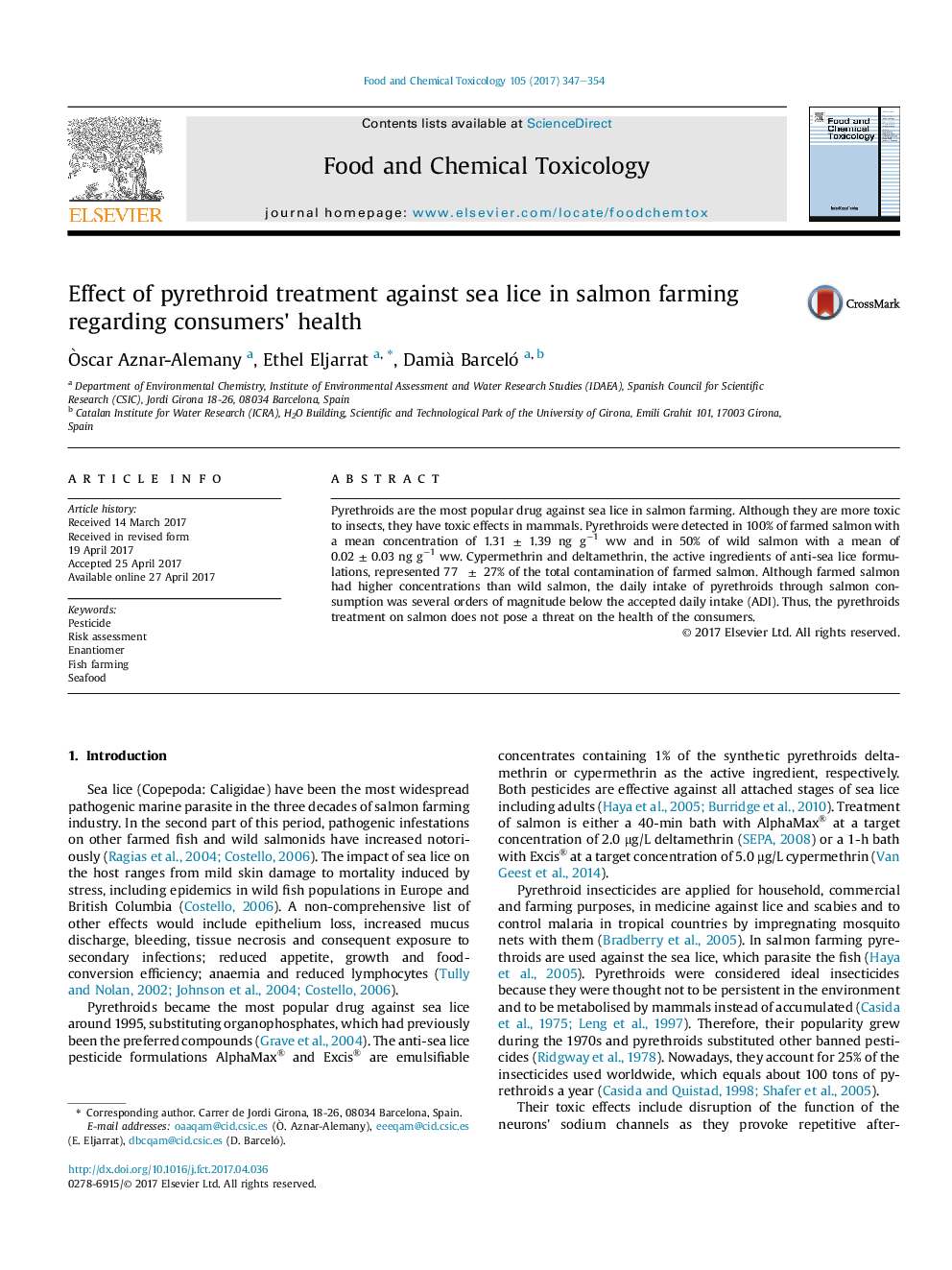| Article ID | Journal | Published Year | Pages | File Type |
|---|---|---|---|---|
| 5560197 | Food and Chemical Toxicology | 2017 | 8 Pages |
â¢Pyrethroids present in 100% farmed salmon with a mean of 1.31 ± 1.39 ng/g ww.â¢Pyrethroids present in 50% wild salmon with a mean of 0.02 ± 0.03 ng/g ww.â¢Active ingredients of anti-sea lice products were 77% of the contamination.â¢Pyrethroids consumption through farmed salmon was 0.002% of the ADI.â¢Different salmon species accumulated cypermethrin enantiomers differently.
Pyrethroids are the most popular drug against sea lice in salmon farming. Although they are more toxic to insects, they have toxic effects in mammals. Pyrethroids were detected in 100% of farmed salmon with a mean concentration of 1.31 ± 1.39 ng gâ1 ww and in 50% of wild salmon with a mean of 0.02 ± 0.03 ng gâ1 ww. Cypermethrin and deltamethrin, the active ingredients of anti-sea lice formulations, represented 77ââ ± â27% of the total contamination of farmed salmon. Although farmed salmon had higher concentrations than wild salmon, the daily intake of pyrethroids through salmon consumption was several orders of magnitude below the accepted daily intake (ADI). Thus, the pyrethroids treatment on salmon does not pose a threat on the health of the consumers.
